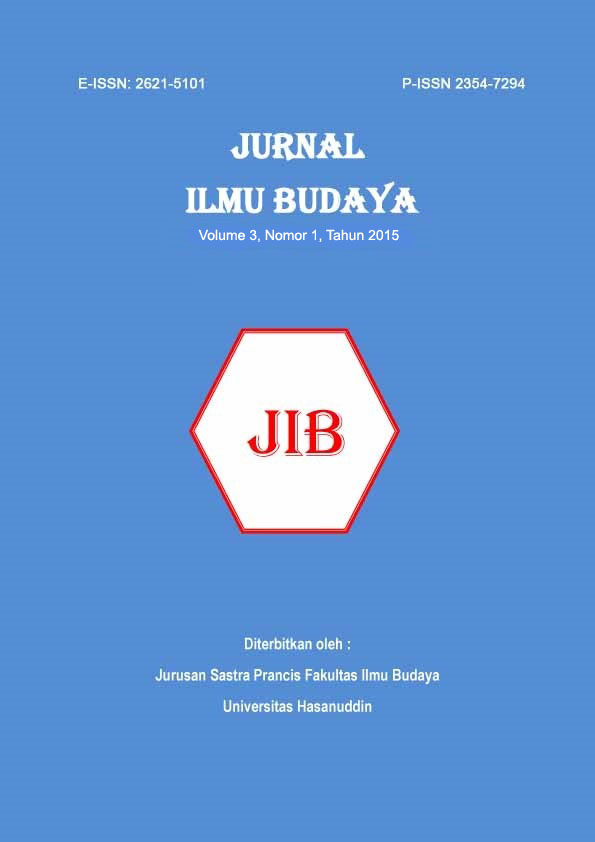TEACHER’S ROLE IN TEACHING ENGLISH AS A FOREIGN LANGUAGE
DOI:
https://doi.org/10.34050/jib.v3i2%20Des.2431Abstract
The teaching of English as a foreign language in Indonesia aims at providing learners with adequate knowledge touse the language for communicative purposes, both oral and written form. Although student-centered learning has
been the dominant activities in the classroom during this decade, the roles of English teachers in managing the class,
in applying teaching and learning methods, as well as in preparing the learning materialsare still of crucial parts
especially in cunducting multidirectional communication between teacher and students and among the students
themselves.
In term of teaching, teachers are not only requested to transfer knowledge from their brain to their students‘, but also
prepare them with adeqateskills and valuable social norms for the use of conducting good relationship in social life.
This article attempts to investigate the roles teachers that should be performed at class and then give some advice of
affective strategies in English teaching as a foreign language.
Keywords: English Foreign Language, Teachers‘ role, Communicatice competence
References
Allington, R.L. (1983). The reading
instruction provided readers of
differing reading abilities. The
Elementary SchoolJournal, 83, 548–
Archer, E. (2010). They made me an
invitation I couldn‘t refuse: Teaching
refusal strategies for invitations. In
D. H. Tatsuki & N. R. Houck (Eds.),
Pragmatics:Teaching speech acts
(pp. 181–194). Mattoon, IL: United
Graphics, Inc.
Asher, J. J. (1969). The Total Physical
Response approach to second
language learning.
The Modern Language Journal, 53,
-17. doi:10.1111/j.1540-
1969.tb04552.x
Ballman, T. L., Liskin-Gasparro, J. E., &
Mandell, P. B. (2001). The
communicative
classroom. (Vol. 3). Boston, MA:
Heinle & Heinle Thomas Learning.
Blair, T.R. (2003). What research on
teaching tells us about reading
teacher competencies. In A. Pandian,
G.Chakravarthy, & S. Che Lah
(Eds.), English language teaching
and literacy: Research and
reflections, Serdang, Malaysia:
Universiti Putra Malaysia Press.
Blair, T.R., & Rupley, W.H. (2000, May).
Assessing instructional emphases in
a balanced reading program.
Duffy-Hester, A.M. (1999). Teaching
struggling readers in elementary
school classrooms: A review of
classroomreading programs and
principles for instruction. The
Reading Teacher.
Duff, P., Wong, P., & Early, M. (2000).
Learning language for work and life:
The linguistic socialization of
immigrant Canadians seeking careers
in healthcare.
Canadian Modern Language Review.
Ellis, R. (2003). Task-based language
learning and teaching. Oxford:
Oxford University Press.
Han, H. (2009). Institutionalized inclusion:
A case study on support for
immigrants in English learning.
TESOL Quarterly, 43(4), 643–668.
doi:10.1002/j.1545-
2009.tb00190.
Hyland, K. 2003. Second Language Writing.
New York: Cambridge University Press.
Krashen, S. D. (1982). Principles and
practices in second language
acquisition. New York: Pergamon.
[electronic version accessed 24 April
at
http://www.sdkrashen.com/Principle
s_and_Practice/Principles_and_Pract
ice.pdf
Lee, J. F., & VanPatten, B. (2003). Making
communicative language teaching happen (2nd ed.). New York, NY:
McGraw-Hill.
Long, M. H. (1996). The role of the
linguistic environment in second
language
acquisition. Handbook of second
language acquisition.
Richards, Jack C., and Theodore
Rodgers(2001). Approaches and
Methods
in Language Teaching. Second
Edition. New York: Cambridge
University
Press.
Richards, Jack C., and Charles Sandy(1998).
Passages. New York:
Cambridge University Press.
Slavin, R. (1999). Cooperative Learning,
theory, research, and practice.
Englewood Cliffs, NJ: Prentice-Hall.
Swain, M. (1985). Communicative
competence: Some roles of
comprehensible input and
comprehensible output in its
development. In S. Gass & C.
Madden (Eds.), Input
in second language acquisition.
Rowley, MA: Newbury House.
Swain, VanPatten, B. (1988). How juries get
hung: Problems with the evidence for
a focus on form in teaching.
Language Learning.
Vygotsky, L. S. (1978). Mind in society:
The development of higher
psychological
processes. M. Cole, V. John-Steiner,
S. Scribner, E. Souberman (Eds.).
Cambridge, MA: Harvard University
Press.
Downloads
Published
Issue
Section
License
Copyright (c) 2017 JURNAL ILMU BUDAYA

This work is licensed under a Creative Commons Attribution-NonCommercial 4.0 International License.


